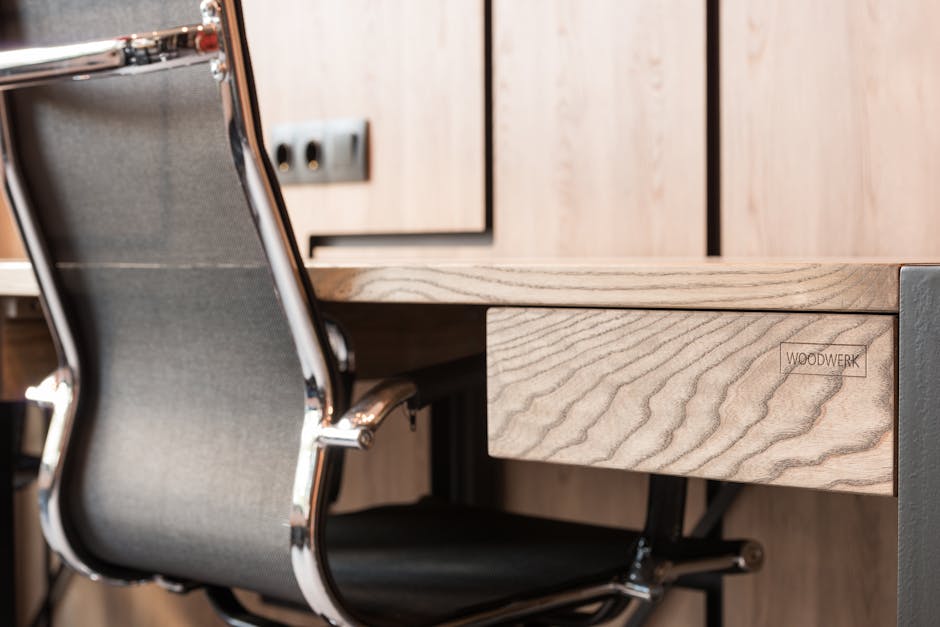Unlocking the Power of Hot Desking: A Comprehensive Guide
"Hot desking has become a staple of modern, flexible office design. This comprehensive guide explores the benefits, challenges, and best practices of implementing a hot desking policy in your workspace. Learn how to optimize your office layout, boost collaboration, and embrace the future of work with hot desking. "

In today's dynamic work environment, companies are constantly seeking ways to optimize their office space and foster a more collaborative, flexible atmosphere. One solution that has gained significant traction in recent years is hot desking.  By replacing permanently assigned desks with shared workstations, organizations can unlock the potential of their physical space and embrace a more agile way of working.
By replacing permanently assigned desks with shared workstations, organizations can unlock the potential of their physical space and embrace a more agile way of working.
What is Hot Desking?
Hot desking is a flexible seating arrangement that allows employees to book and use a desk for any period during the day. Rather than having a permanently assigned workspace, individuals can choose where they want to sit based on their needs and preferences. This system is designed to optimize available workspace, reduce real estate costs, and promote cross-functional interactions among colleagues.
How Does Hot Desking Differ from Hoteling?
While often used interchangeably, hot desking and hoteling are not the same. Hoteling involves employees reserving a desk for a set period, often spanning days, weeks, or even months. In contrast, hot desking is typically more short-term and on-demand, with individuals booking desks on an ad hoc basis.
Benefits of Hot Desking
Implementing a hot desking policy can bring numerous advantages to both employees and the organization as a whole:
-
Flexibility: Hot desking empowers individuals to work where they feel most comfortable and productive. This autonomy can lead to increased job satisfaction and a better work-life balance.
-
Collaboration and Productivity: By encouraging employees to sit with different coworkers and departments, hot desking can foster cross-functional interactions, knowledge sharing, and a stronger sense of belonging.

-
Cost Savings: With fewer permanently assigned desks, companies can reduce their real estate footprint and associated costs, such as rent, utilities, and maintenance.
-
Data-Driven Decision Making: Hot desking provides valuable insights into space utilization, allowing organizations to make informed decisions about future real estate needs and optimize their office layout accordingly.
Challenges of Hot Desking
While the benefits of hot desking are significant, it's essential to acknowledge and address potential challenges:
-
Technology Requirements: Implementing a successful hot desking system relies heavily on having the right desk booking software in place. Without a user-friendly solution, the process can become chaotic and stressful for employees.
-
Resistance to Change: Some individuals may be hesitant to give up their dedicated workspace and adapt to a new way of working. Clear communication and change management strategies are crucial for a smooth transition.
-
Lack of Personalization: Hot desking requires employees to clear their desks at the end of each day, which can be inconvenient for those who prefer to keep personal items or work materials close at hand. Providing lockers or other storage solutions can help mitigate this issue.
Best Practices for Implementing Hot Desking
To ensure a successful hot desking rollout, consider the following best practices:
-
Invest in a Robust Desk Booking Solution: Choose software that integrates seamlessly with your existing tech stack and offers features like team neighborhoods, hourly booking, workspace maps, and desk amenities.
-
Design Your Floor Plan Strategically: Create a mix of quiet areas, collaboration spaces, and desk booths to cater to different work styles and preferences. Use space planning tools to optimize your layout and ensure efficient utilization.
-
Communicate Clearly and Regularly: Generate excitement about the transition to hot desking by highlighting its benefits and addressing any concerns. Provide a best practice guide to help employees understand the new system and etiquette.
-
Prioritize Cleanliness and Hygiene: Implement a regular cleaning schedule to maintain a safe and healthy work environment. Provide sanitizing wipes and encourage employees to clean their workstations before and after use.
-
Collect Feedback and Analyze Data: Regularly gather employee feedback through surveys or suggestion boxes to identify areas for improvement. Use desk analytics to understand space utilization patterns and make data-driven decisions.

Is Hot Desking Right for Your Organization?
Hot desking can be an excellent fit for companies that prioritize flexibility, mobility, and collaboration. Whether you have a hybrid, office-first, or remote-first work model, hot desking can help you optimize your space and support your employees' needs.
However, it's essential to carefully consider your company culture, workforce demographics, and business requirements before making the switch. By weighing the benefits and challenges, and following best practices for implementation, you can cultivate a harmonious workplace culture that embraces the future of work.
Hot desking has come a long way since its inception, evolving from a stressful game of musical chairs to a streamlined, technology-driven solution. By unlocking the power of hot desking, organizations can create a more dynamic, collaborative, and cost-effective work environment that empowers employees and drives business success. 
Want to learn more about Desk Booking?
Explore our complete guide with more articles like this one.


